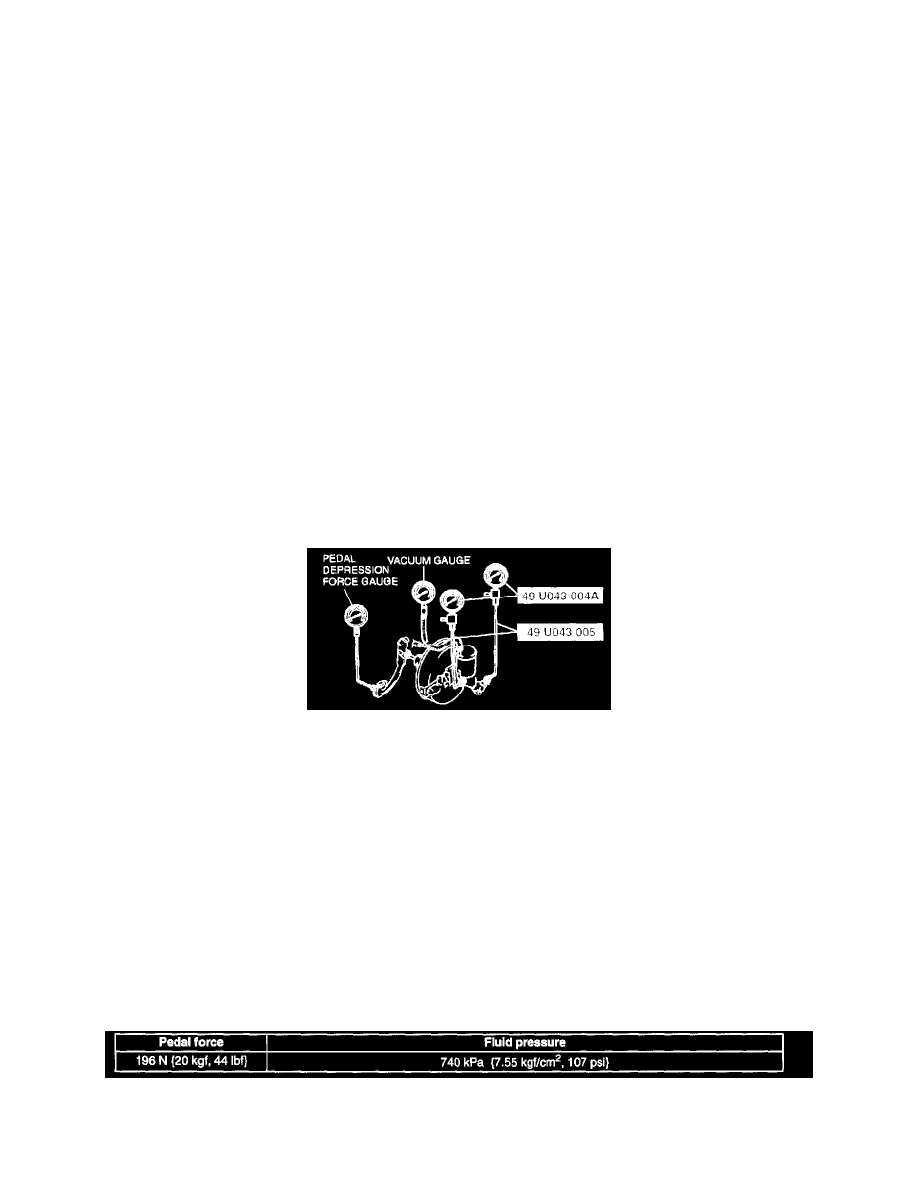MX-5 Miata LS L4-1.8L DOHC (2001)

Vacuum Brake Booster: Testing and Inspection
POWER BRAKE UNIT INSPECTION
Power Brake Unit Function Inspection (Simple Method)
Step 1
1. With the engine stopped, depress the pedal a few times.
2. With the pedal depressed, start the engine.
^
If the pedal moves down slightly immediately after the engine starts, the unit is operating.
Step 2
1. Start the engine.
2. Stop the engine after it has run for 1 or 2 minutes.
3. Depress the pedal with the usual force.
^
If the first pedal stroke is long and becomes shorter with subsequent strokes, the unit is operating.
^
If a problem is found, inspect for damage or improper connection of the check valve or vacuum hose. Repair if necessary and inspect it once
again.
Step 3
1. Start the engine.
2. Depress the pedal with the usual force.
3. Stop the engine with the pedal held depressed.
4. Hold the pedal down for about 30 seconds.
^
If the pedal height does not change, the unit is operating.
^
If there is a problem, inspect for damage or improper connection of the check valve or vacuum hose. Repair if necessary and inspect it once
again.
^
If the nature of the problem is still not clear after following the 3 steps above, follow the more detailed inspect described in "Inspection using
gauges," below.
Power Brake Unit Function Inspection (Inspection using gauges)
1. Connect the SST gauges, a vacuum gauge, and a pedal depression gauge as shown in the figure. Bleed the air from the SST gauges before
performing the following tests.
Checking for vacuum loss (unloaded condition)
1. Start the engine.
2. Stop the engine when the vacuum gauge indicates 66.7 kPa (500 mmHg, 19.7 inHg).
3. Observe the vacuum gauge for 15 seconds.
^
If the gauge indicates 63.4 - 66.6 kPa (475 - 500 mmHg, 18.8 - 19.6 inHg), the unit is operating.
Checking for vacuum loss (loaded condition)
1. Start the engine.
2. Depress the brake pedal with a force of 196 N (20 kgf, 44 lbf).
3. With the brake pedal held depressed, stop the engine when the vacuum gauge indicates 66.7 kPa (500 mmHg, 19.7 inHg).
4. Observe the vacuum gauge for 15 seconds.
^
If the gauge indicates 63.4 - 66.6 kPa (475 - 500 mmHg, 18.8-19.6 inHg), the unit is operating.
Checking for hydraulic pressure
1. With the engine is stopped (vacuum 0 kPa (0 mmHg, 0 inHg)) and the fluid pressure is within the specification the unit is operating.
